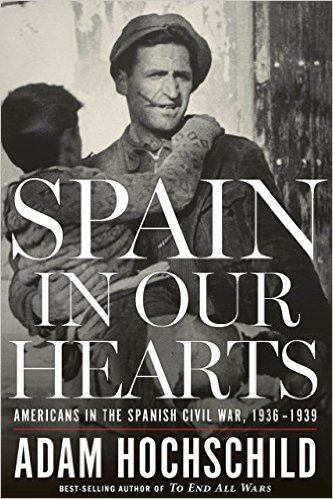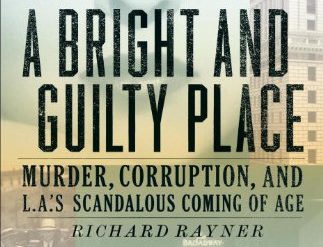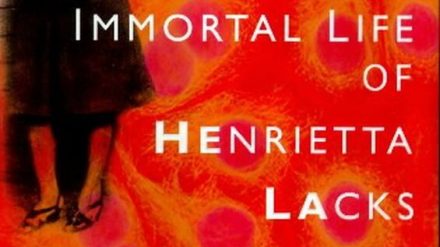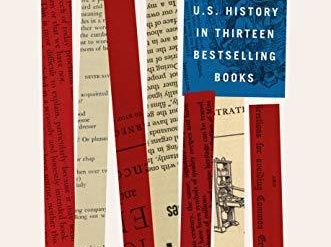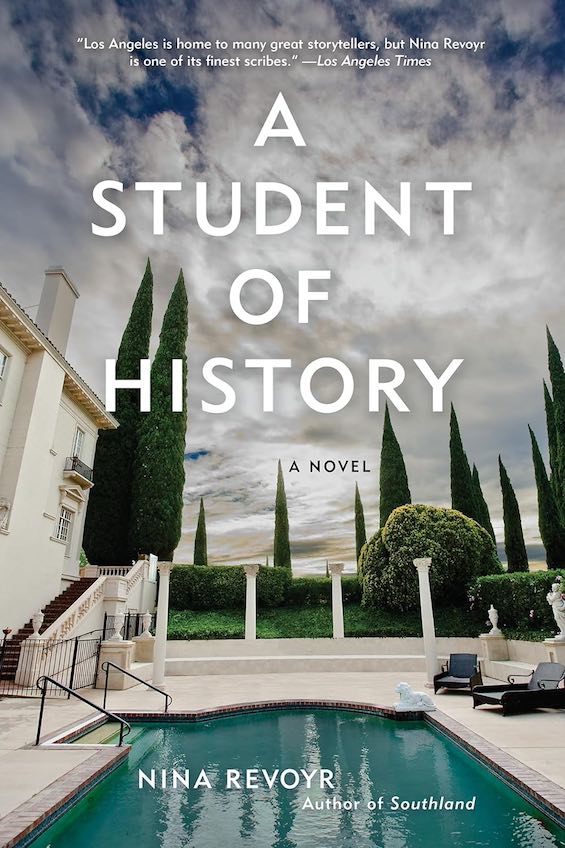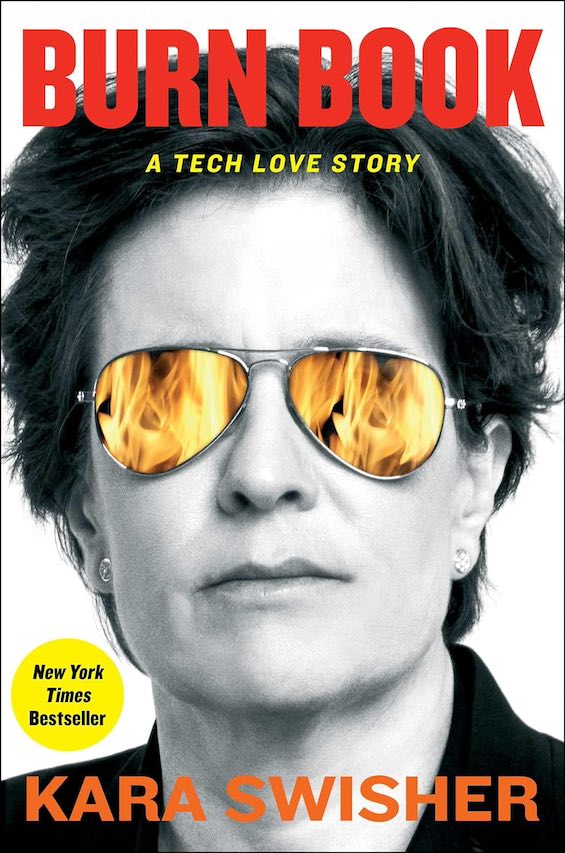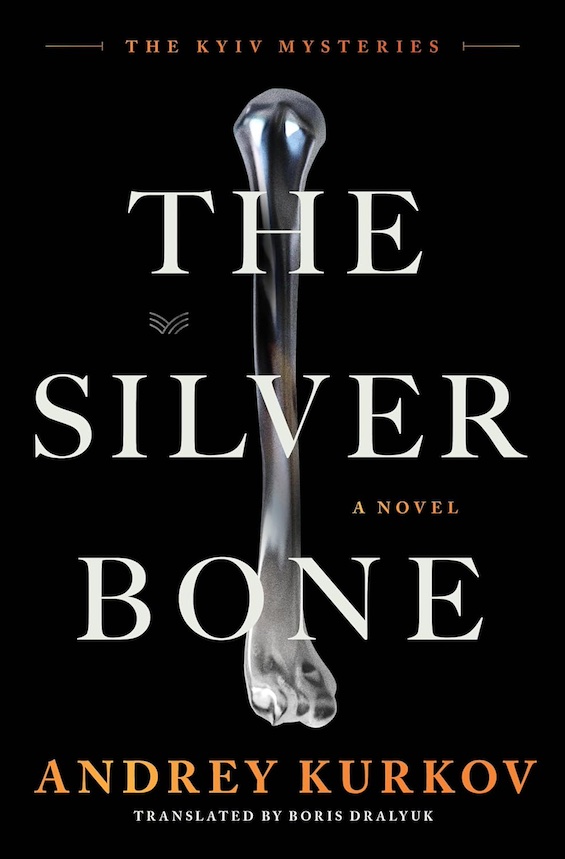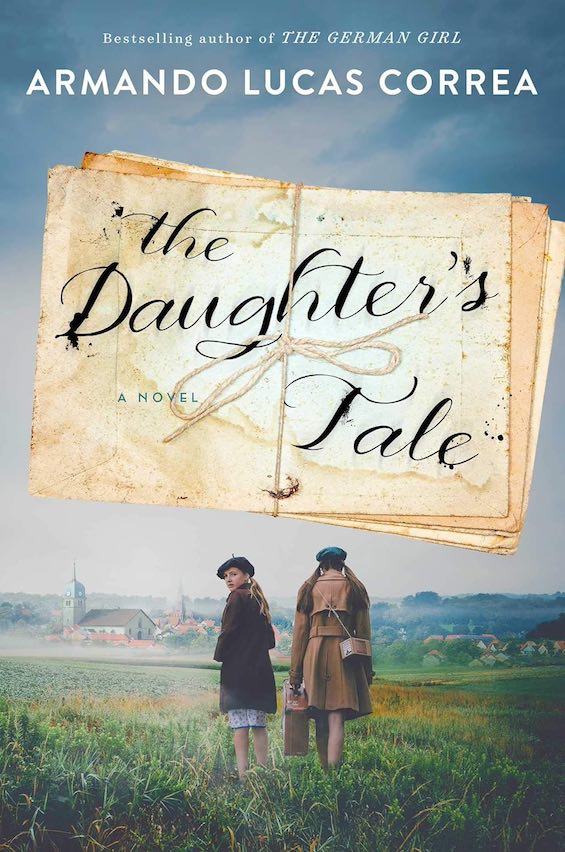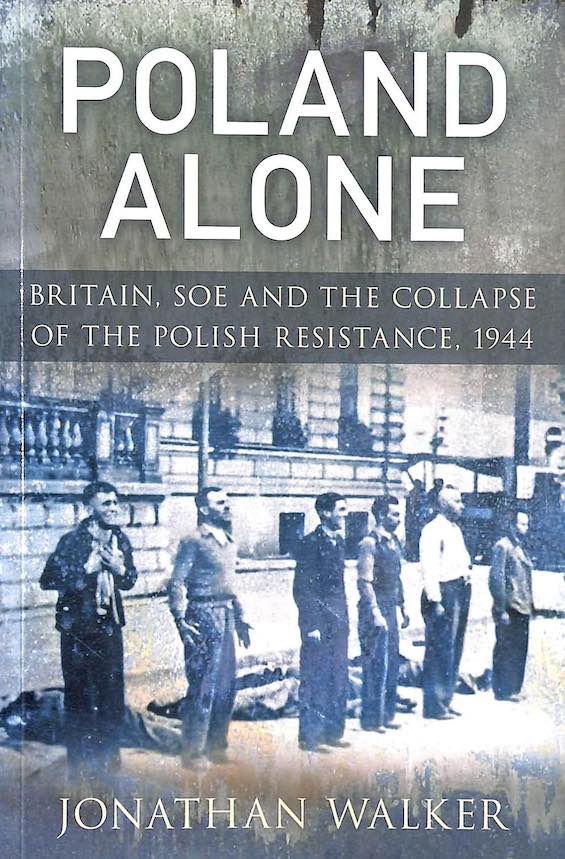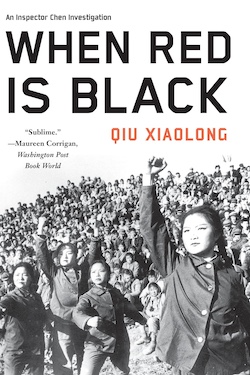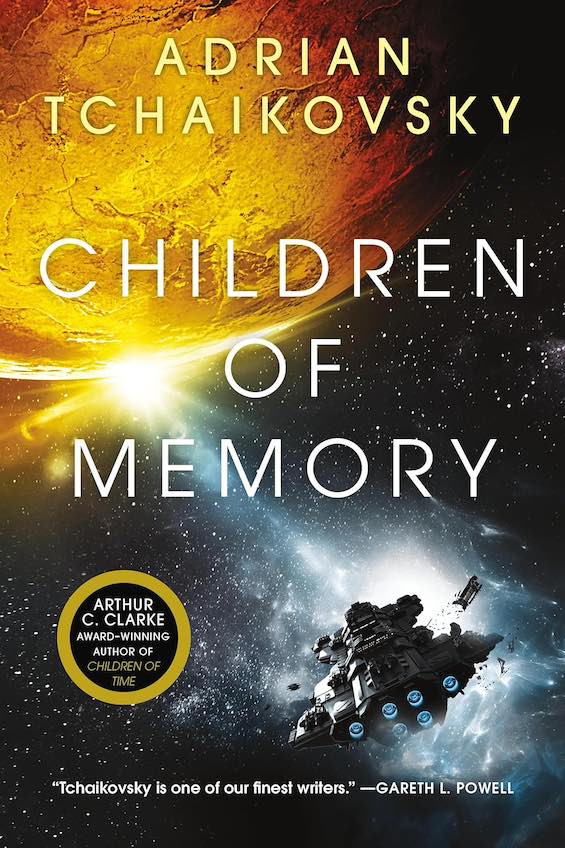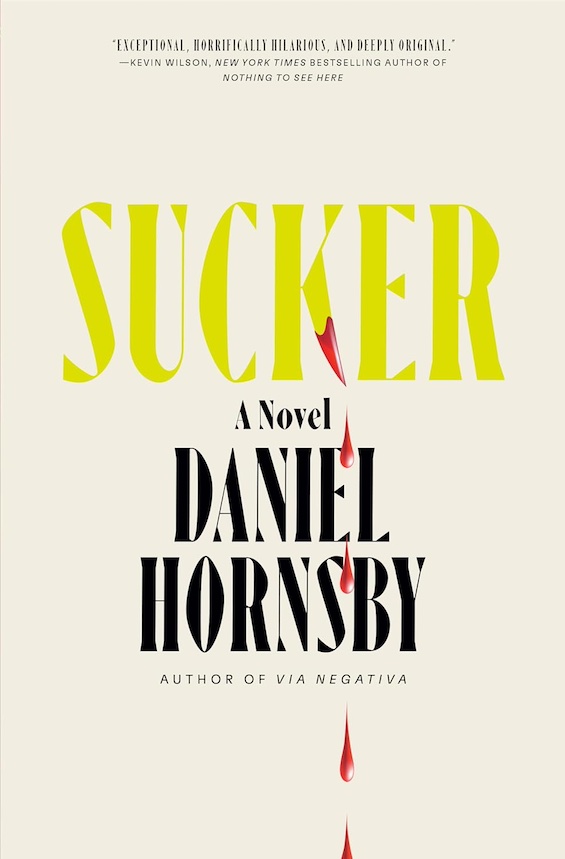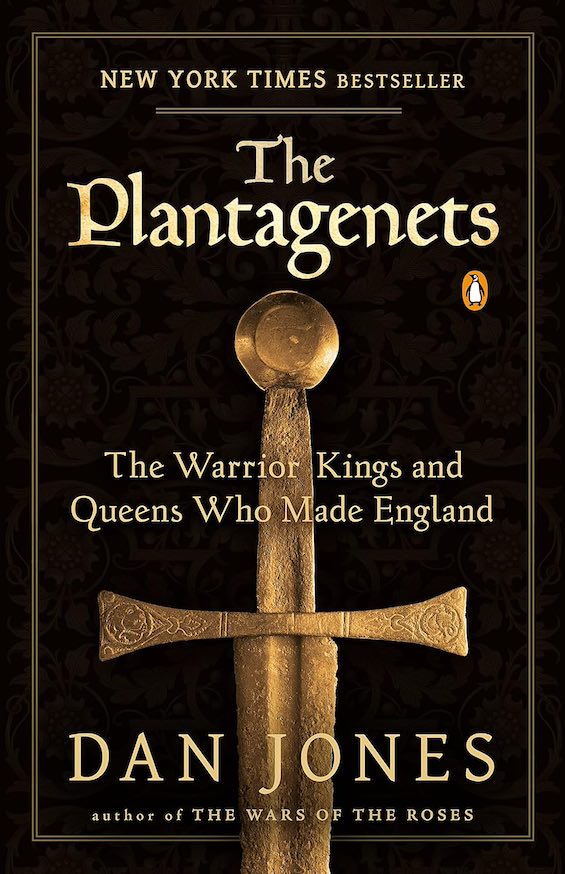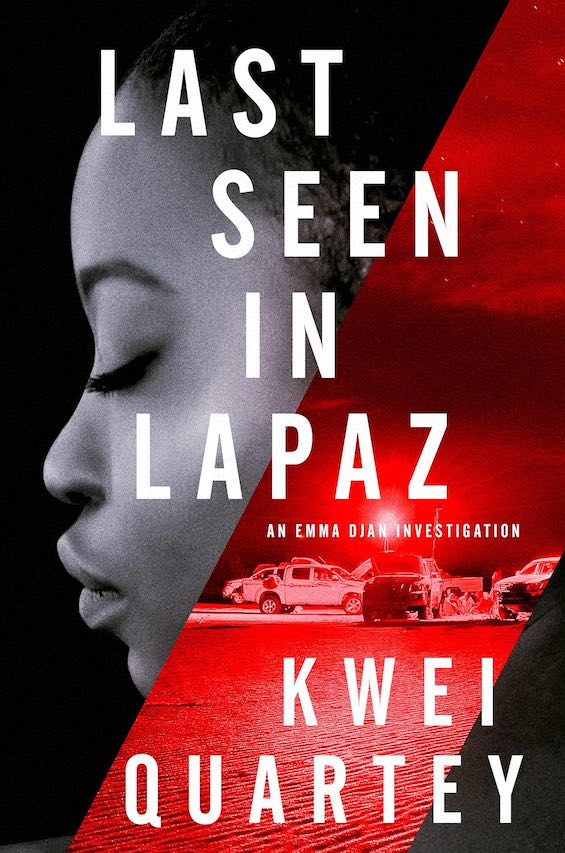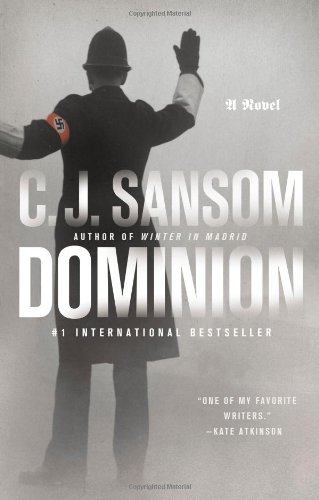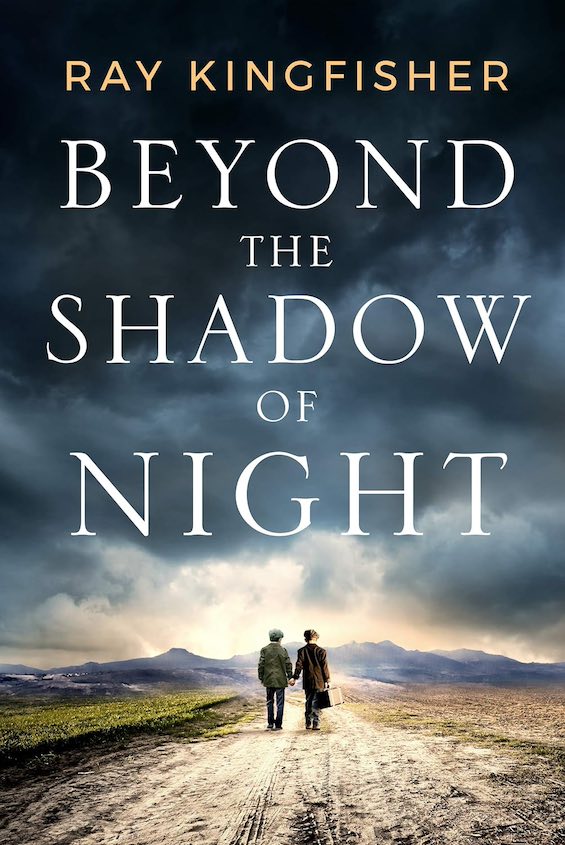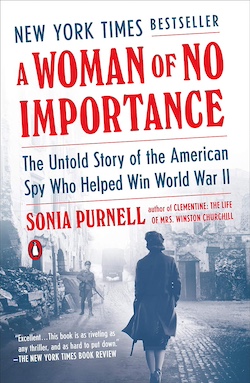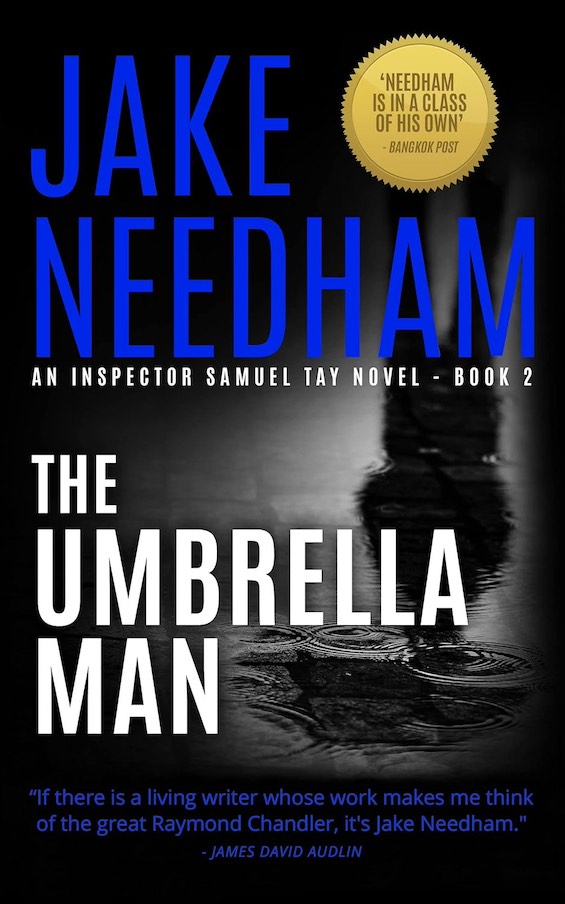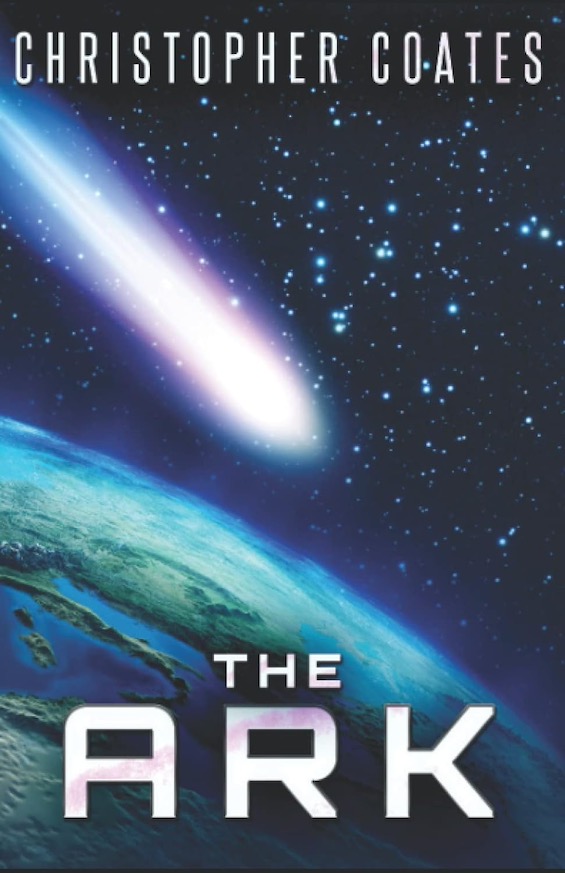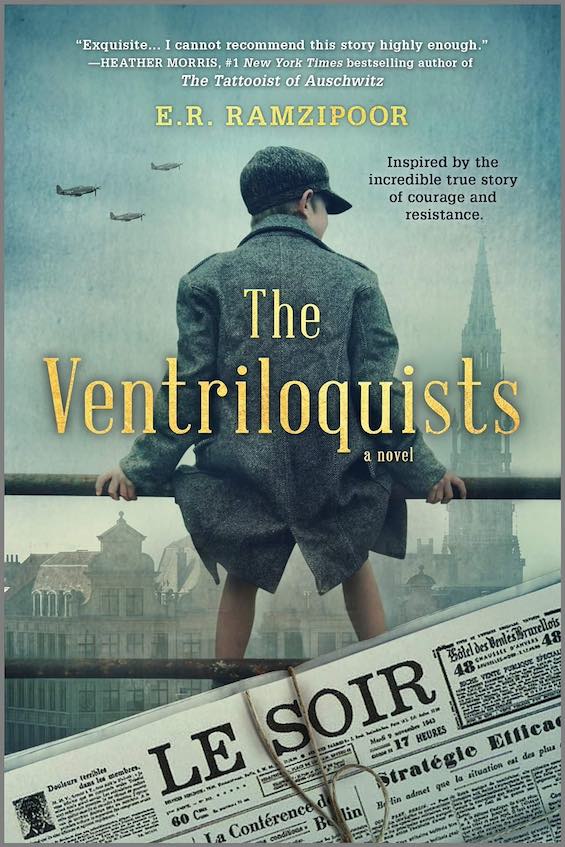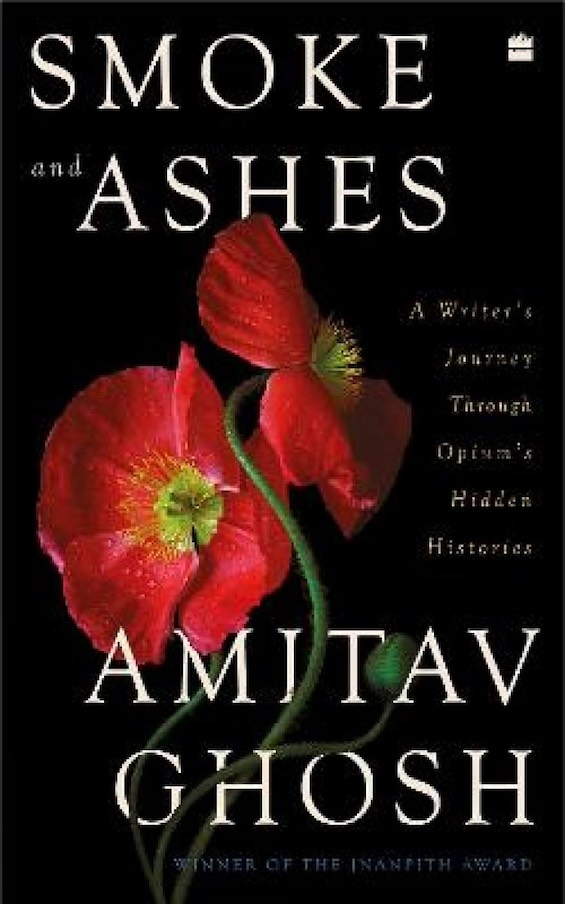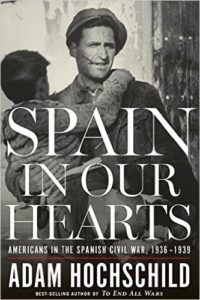
A few weeks ago I read and reviewed Richard Rhodes’ Hell and Good Company: The Spanish Civil War and the World It Made, which was published last year. More recently, Adam Hochschild tackled Spanish Civil War history in a book published this year. It’s the book that Rhodes tried and failed to write. It’s called Spain in Our Hearts. I found it to be an outstanding and deeply moving tale of an event that has received far too little attention by historians. (Amazon lists just 334 history books involving the civil war as compared with 114,985 for World War II.)
Estimated reading time: 9 minutes
The Spanish Civil War through American eyes
To write this important new book, Hochschild pored through the letters, diaries, and newspaper dispatches written by Americans who served in the war. These men (and a few women) served as either soldiers in what came to be called the Abraham Lincoln Brigade, as doctors or nurses serving them and other soldiers of the embattled Republic, or as reporters who fed the American press with on-the-scene accounts of the fighting. Hochschild covers the war from its origins to its conclusion, reliving the signature battles of the war: Jarama, Ebro River, Guadalajara, Brunete, Teruel, and, of course, the notorious fire-bombing of Guernica and the epic siege of Madrid.
Spain in Our Hearts: Americans in the Spanish Civil War, 1936-1939 by Adam Hochschild (2016) 485 pages ★★★★★
At the time, all these names were widely recognizable to the newspaper-reading American public. As Hochschild reports, “While the fighting lasted, from mid-1936 to early 1939, the New York Times ran more than 1,000 front-page headlines about the war in Spain . . .” And that span of time encompassed fewer than 1,000 days.
Hochschild brings back to life both those whose names are instantly recognizable as well as many who have been long forgotten. Reporters and writers such as Herbert Matthews, Virginia Cowles, Ernest Hemingway, Martha Gellhorn, George Orwell, and Louis Fischer. Physicians, nurses, and ambulance drivers including Dr. Edward Barsky, Jim Neugass, Toby Jensky, Marion Merriman, and Ellen Blair. Combatants such as Bob Merriman, Alvah Bessie, Charles Orr, Milton Wolfe, and Pat Gurney. (A few of these people were British or Canadian, the rest American.) Every one of these individuals rises, vividly, from the pages of Spain in Our Hearts, touched by Hochschild’s remarkable talent to bring the past to life. This is popular history at its best.
Siding with the Republic
Nearly all the Americans who took part in the Spanish Civil War sided with the Republic — not just the 2,500 volunteers who fought in the Abraham Lincoln Brigade. With only one prominent exception reported by Hochschild all the American and British reporters betrayed their sympathy to the cause through their articles, diaries, and books, sometimes disingenuously slanting their reporting to favor the Republic. (The exception was a New York Times reporter who followed the Nationalist side. He consistently whitewashed the atrocities of Franco’s forces and even made a propaganda broadcast for the insurgency. After the war he was hired as Spain’s American lobbyist.)
Americans were by no means alone in fighting for the Republic. Those 2,500 men constituted a small portion of the 35,000 to 40,000 “men from more than 50 countries [who] would fight in five International Brigades.” A great many of these volunteers — including three-quarters of the “Lincolns” — were Communists or what were familiarly known then as “fellow travelers.” For some, their experience in Spain was disillusioning, as they witnessed the imprisonment and execution of colleagues who strayed from the Stalinist party line. After all, the purges and the show trials were at their peak in the Soviet Union during the years of this war, claiming an estimated total of between 600,000 and 1.2 million casualties.
A civil war fought and lost by foreign powers
It may be difficult for Americans these days to understand the depth of isolationist feeling that gripped the United States before the Second World War. This sentiment continued a long history of attempts, usually successful, to keep the US out of what George Washington famously called “foreign entanglements.” When the country entered World War I at the behest of President Woodrow Wilson, that proved to be an aberration. Wilson’s failure to gain Congressional support for the League of Nations proves that point. It should be no surprise, then, that FDR and the right-wingers in his State Department refused to support the heroic resistance of the Spanish Republic to Francisco Franco’s Fascist insurgency. FDR was sympathetic to the cause but unable to take action, and he later regarded his failure to do so as a “grave mistake.”
Though the US, Great Britain, and France all withheld support for the Republic, three other leading powers of the day plunged into the conflict with enthusiasm: Nazi Germany, Fascist Italy, and the Soviet Union under Josef Stalin. Adolf Hitler and Benito Mussolini regarded the war in Spain as a dress rehearsal for the larger conflict to follow. Their lavish support for Generalissimo Franco in the form of airplanes, tanks, rifles, artillery, and some 100,000 soldiers and airmen was decisive (80,000 from Italy, 19,000 from Germany, in addition to 20,000 from Portugal).
Only the USSR lent assistance to the Republic, but with strings attached
Only the USSR faced off against the Nazis and Fascists, supplying weapons and ammunition, and its support was a mixed blessing: Stalin sold Spain ancient weapons at inflated prices. He also dispatched hard-line political commissars to weed out anyone who didn’t rigidly follow the Party line, and their ruthless behavior was surely a factor in the defeat of the Republic. Though what ifs in history are uncertain at best, it’s not unreasonable to speculate that the war might have gone differently had the Western powers responded in counterpoint to the Axis nations. From the perspective of history, the failure of the US government to permit arms sales to the Republic played a more significant role in the war by far than the participation of 2,500 volunteer soldiers and a handful of brilliant reporters.
Neither side was without blame
Many of the horrors that became emblematic of World War II first saw the light of day in the Spanish Civil War. Nazi Germany and Fascist Italy used the conflict to test new weapons systems and battle tactics, such as dive-bombers, carpet-bombing, mass rape, and the wholesale slaughter of prisoners and civilians. For example, as Hochschild notes, “massacres happened everywhere, whether the advancing Nationalist forces met resistance or not. . . In the northern province of Navarre, one out of every ten Popular Front voters were summarily executed.” As one of Franco’s generals explained, “‘It is necessary to spread terror.'”
However, the forces of the Republic were hardly without blame. Hochschild explains: more than 49,000 civilians were killed in Republican territory during the war . . . [though a] far larger number of people were murdered in Nationalist-controlled Spain: some 150,000, with at least 20,000 more executions after the war.”
Two big stories the reporters missed
Hochschild notes, quizzically, that “the glamorous collection of foreign correspondents” reporting from Republican Spain entirely missed the debut of one of Hitler’s most fearsome weapons: the dive-bomber, which terrorized Republican troops and civilians alike. However, the greatest journalistic failure of the war was the lack of news on the home front about the American who may have played as large a role in helping Franco win the war as Adolf Hitler or Benito Mussolini. He was the Norwegian-born oilman, Torkild Rieber, who ran Texaco and supplied the Nationalists with the fuel that ran their trucks, tanks, and planes — and did so on credit and without charging for the cost of transporting the oil from Texas to Spain on the company’s ships.
As Hochschild notes, “this lifeline from Texaco ensured that Franco could continue to wage war.” Following Torkild’s lead, other US oil companies began supplying the Nationalists. His behavior was blatantly illegal, but he escaped prosecution with little more than a modest fine for supplying credit to a nation at war.
Communists versus anarchists
Hochschild also dwells at length on another aspect of the war that has received far too little attention, not just at the time but in the decades after the fall of the Republic. Following a tradition nearly unique to Spain, the country’s powerful anarcho-syndicalists undertook a utopian experiment in the midst of the war — an experiment that brought them into violent conflict with the Communists who came to dominate the Republican government as the war progressed. Anarchists seized control of farms and factories and organized military units without distinctions of rank.
“Although the Spanish Revolution took place amid one of the largest concentrations of foreign correspondents on earth, they virtually never wrote about it,” Hochschild writes. “The fact that a utopian social revolution might have been an impractical and romantic dream even in peacetime, and was surely an impossible one when fighting a terrible war, made it no less worth reporting.”
About the author
Adam Hochschild is the author of four outstanding books that have helped me understand today’s events in the light of history. I read both King Leopold’s Ghost: A Story of Greed, Terror and Heroism in Colonial Africa and Bury the Chains: Prophets and Rebels in the Fight to Free an Empire’s Slaves before I began posting reviews. Five years ago I read and reviewed his fascinating history of the resistance to World War I, To End All Wars: A Story of Loyalty and Rebellion, 1914–1918. (My review is at World War I: Learning history the hard way.) Spain in Our Hearts is the most recent of his eight books. On Hochschild’s Wikipedia page, there’s a list of 15 literary awards he’s won for his work. All well deserved, I’m sure.
For related reading
I’ve been reading Adam Hochschild’s books for many years. Those I’ve read more recently and reviewed here include:
- To End All Wars: A Story of Loyalty and Rebellion, 1914-1918 (Reassessing World War I: Learning history the hard way)
- Rebel Cinderella: From Rags to Riches to Radical, the Epic Journey of Rose Pastor Stokes (Early 20th-century America viewed through the life of one extraordinary woman)
- American Midnight: The Great War, a Violent Peace, and Democracy’s Forgotten Crisis (Repression, censorship, and official violence in the First Red Scare)
This is one of 13 good recent books about American foreign policy and of the many Good books by Berkeley authors.
You may enjoy browsing through The 10 best novels about World War II. And for a novel about one of the most haunting legacies of Francisco Franco’s long years in power, see Mala Vida by Marc Fernandez (The ghost of Francisco Franco haunts Spain today).
For more good books on the history of the US, see Top 20 popular books for understanding American history.
And you can always find my most popular reviews, and the most recent ones, on the Home Page.

